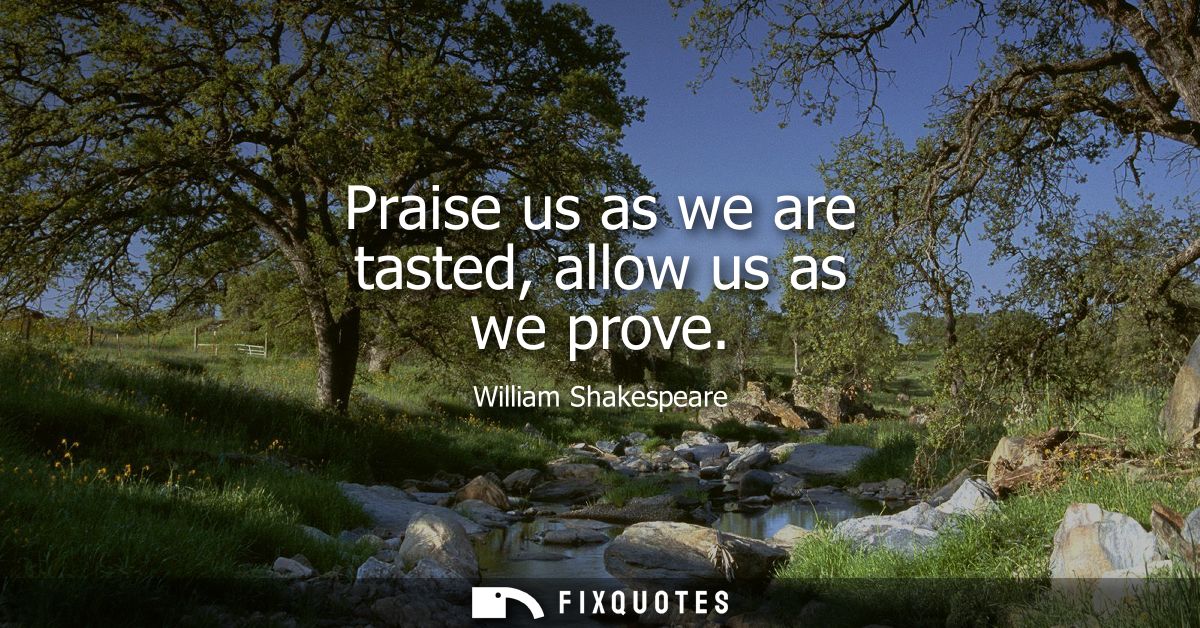"Praise us as we are tasted, allow us as we prove"
About this Quote
William Shakespeare’s line, “Praise us as we are tasted, allow us as we prove,” invites a nuanced reflection on the nature of human merit and reputation. The metaphor of being “tasted” likens individuals to food or drink sampled for quality; praise should be assigned only after someone is experienced firsthand. This cautious approach warns against bestowing accolades based on hearsay, appearance, social standing, or prematurely drawn conclusions. True appreciation should emerge from direct engagement and genuine understanding.
The second portion, “allow us as we prove,” extends this logic. Beyond initial impressions, Shakespeare appeals for tolerance and opportunity, permission to define oneself and demonstrate character over time. “Allow” implies patience and openness, an acknowledgement that people unfold and reveal depth not immediately apparent. “Proving” references the trial or testing of worth, echoing how gold is assayed or steel is tempered. It is through action, sustained conduct, and enduring adversity that integrity and virtue are reliably measured. Only as a person “proves” themselves, through deeds and challenges, should they fully earn society’s trust or favor.
Taken together, the quote champions fairness in both judgment and opportunity. It argues for withholding excessive acclaim or condemnation until individuals have been genuinely “tasted”, encountered and engaged with in their authentic state. Furthermore, it insists on granting the space and chance for people to “prove” themselves, evolving beyond snap assessments or prejudiced expectations. Shakespeare gestures toward an ideal where recognition, be it of skill, character, or merit, arises from thoughtful discernment and patient observation.
The verse remains relevant as a reminder against rash judgments and superficial appraisal. Whether in personal relationships, workplaces, or public life, the challenge is to measure others not by rumor or first glance, but by what emerges through real interaction and careful observation over time.
About the Author

